Tillandsia reversa
Click thumbnails for full size, scaled to a new window.
Tillandsia reversa
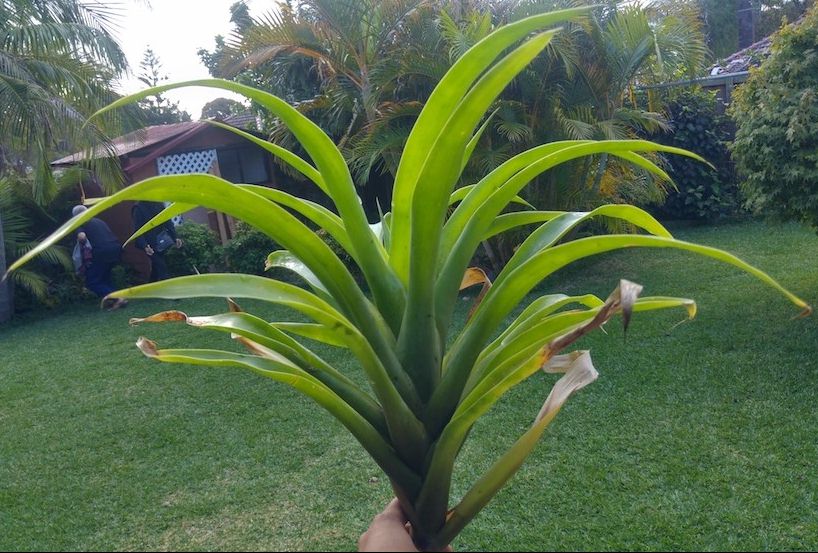
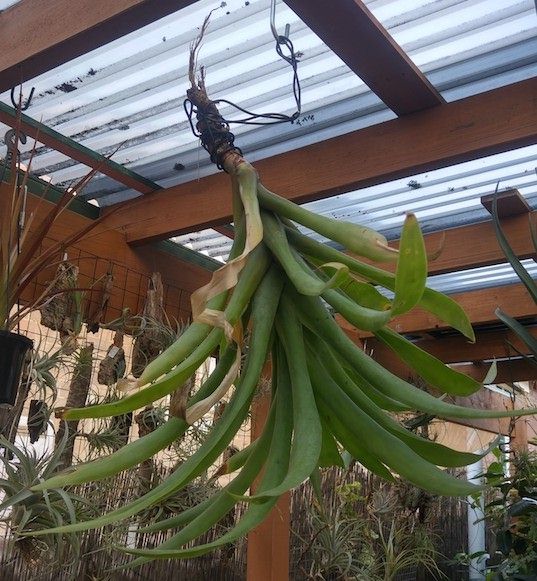
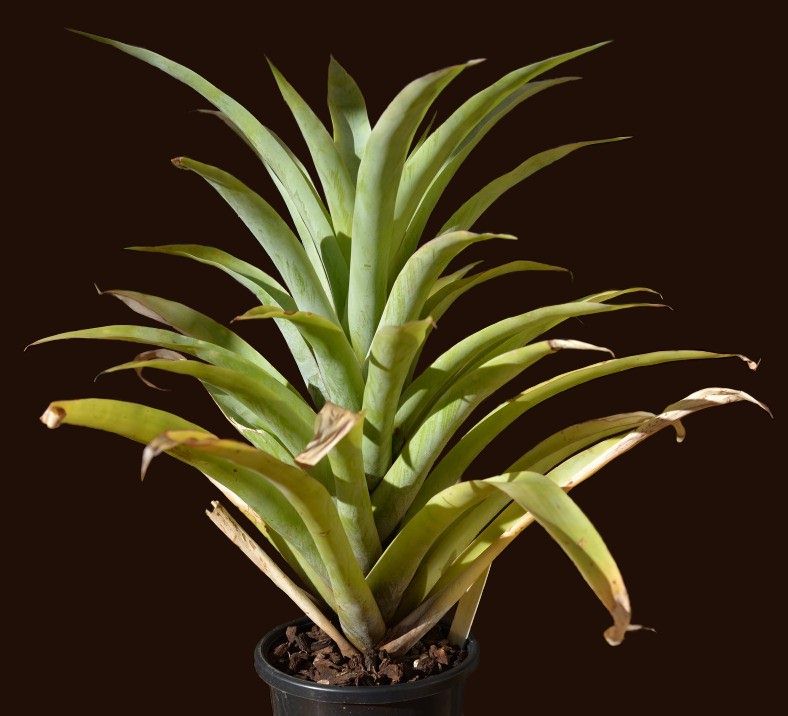
| Harold Kuan 04/18 aff. reversa |
George Nieuwenhoven 04/18 |
Harold Kuan ... "Does anyone else have T. sp. aff. reversa ? And what might be your cultivation habits? Is it caulescent? I'd be so interested to see its growth habit, so if you have any photos of it, that would be wonderful and deeply appreciated."
George Nieuwenhoven ... "my plant of aff. reversa originally obtained from Chris Larson some time ago has grown very well considering the hard time it has during our Adelaide summers, no flowers just yet but I expect given time it will. I find it is easy to grow in Adelaide but do keep it under polycarbonate although this is probably not necessary. We do struggle with hot dry summers here, hence the dead tips. It’s in a mesh pot with fairly course bark."
Harold Kuan ... "Thank you for the information and also the photo. Seems like it's growing nicely for you in Adelaide. It's looking grand.
Do you or anyone else know if T. sp. aff. reversa might be able to exhibit a caulescent growth habit? The reason why I ask, is that I've got it essentially hanging upside down.
When I bought this from Peter Tristram, I THINK I recall him saying it would be fine upside-down, and over time it would grow upwards in a caulescent manner....but my memory escapes me and I just can't be sure. Can anyone confirm if it will be fine like this upside-down?"
Chris Larson ... "Don’t be of the assumption that all plants with a tag like T. aff. reversa actually are the same plant. This group of tillandsias are a group that I believe need a bit of sorting/investigation – which won’t happen in the near future. They also include T. kaufmannii and a couple of others – and a few intermediates. I have several of forms of these plants – some from Knize & some I collected.
My opinion:
It is possible to grow it upside down but it will be difficult to hydrate. I don’t believe it to be beneficial to grow it upside down. Anything with a tank should be upright for best growth – except where you need to keep it dry, such as when we try to grow T. xerographica in a cold climate. With xeros some of us turn them upside down over winter, but have them upright over the growing season.
All of these plants (that I have) seem OK in the cold and get watered regularly – and get rain if it comes from the right direction (not much of an eve above).
My suggestion: grow it either mounted upright, or in a pot with small orchid bark. The ones in orchid bark have grown faster, but they (mostly) do not produce fine roots. They mostly have thick wiry roots that come out the holes in the bottom of the pot."
Tillandsia reversa L. B. Smith, Phytologia 5: 40, pl. 4, Fig. 1-3. 1954.
Acaulis; foliorum laminis ligulatis; scapi bracteis haud foliaceis; inflorescentia bipinnata; bracteis primariis minimis; bracteis florigeris imbricatis, sepala superantibus; sepalis extus glabris, intus lepidotis, posticis connatis; petalis staminibusque ignotis
Desc from S&D p701
Plant stemless, flowering 4 dm high.
Leaves numerous, 3 dm long;
Sheaths ample, obscurely brown-lepidote, dark purple above;
Blades ligulate, broadly acute, flat, 5 cm wide, green with a few small purple spots, glabrous above, sparsely lepidote beneath,
Scape erect; scape-bracts imbricate, ovate, acute.
Inflorescence bipinnate, subdigitate;
Primary bracts broadly ovate, acute, scarcely longer than the floral bracts, ecarinate; Spikes divergent, linear-lanceolate, acute, slightly complanate, 8 cm long, 15 mm wide, 10-flowered with 2-3 sterile bracts at base.
Floral bracts densely imbricate, exceeding the sepals, broadly elliptic, acute with the extreme apex incurved, carinate, coriaceous, even, glabrous, orange.
Sepals oblong, obtuse, 17 mm long, glabrous outside, lepidote inside, the posterior high-connate.
Type. Killip & Smith 18056 (holotype GH, isotypes NY, US), edge of woods, near La Baja, 2700-3500 m alt, Santander, Colombia, 14-31 Jan 1927.
DISTRIBUTION. Known from the type collection only.
Tillandsia reversa has scales on the inner surface of the sepals, a condition exactly opposite to that which is general in the genus. Although no petals or stamens have been seen, the species most probably belongs in the subgenus Allardtia next to T. carrieri Andre. It differs from that species in its short inflorescence, small primary bracts, and narrow scarcely complanate spikes.
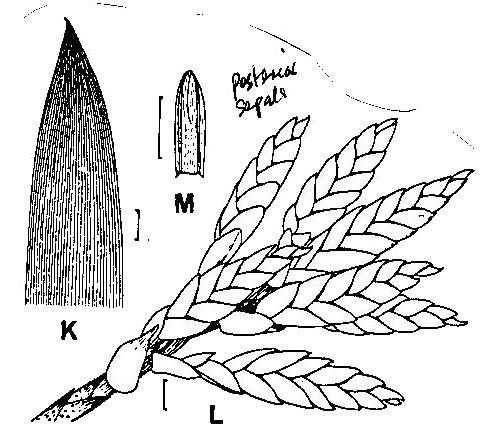
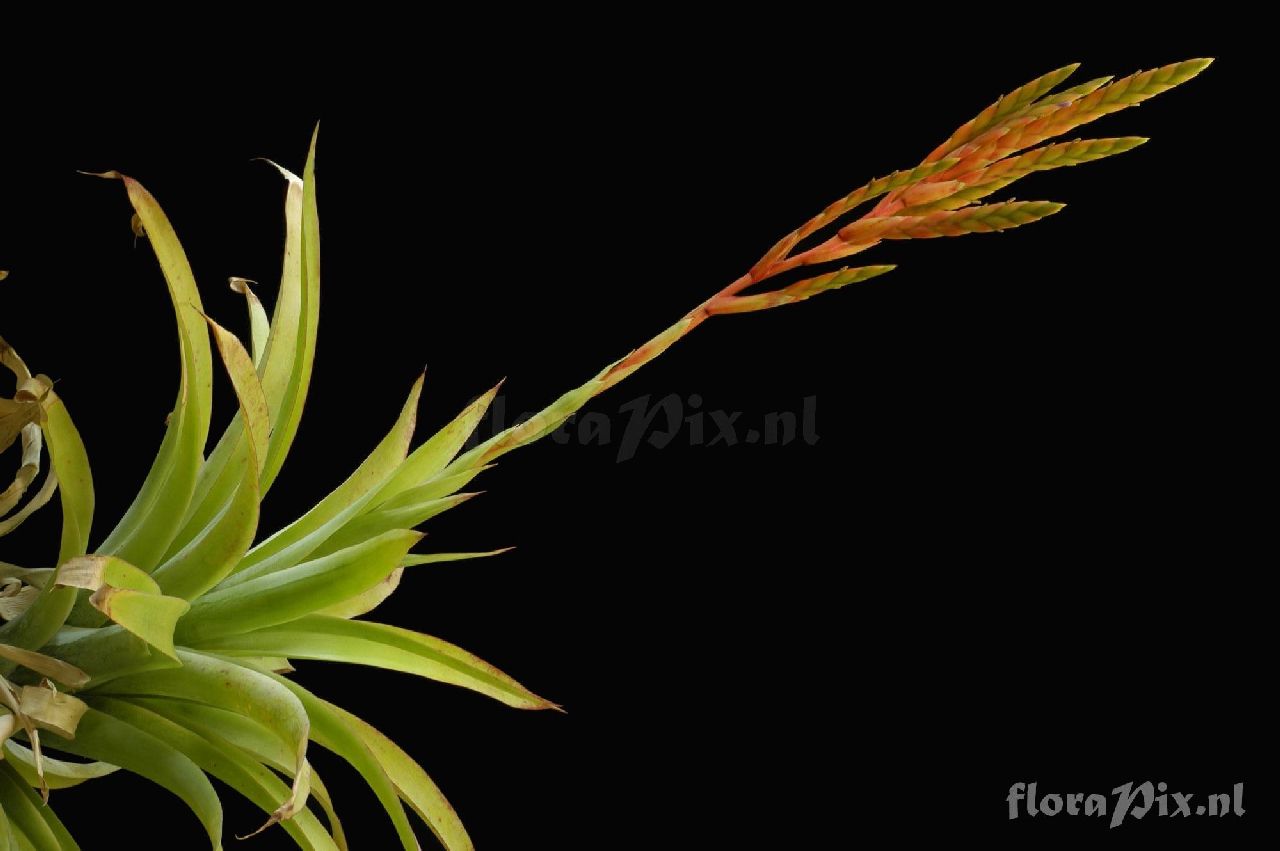
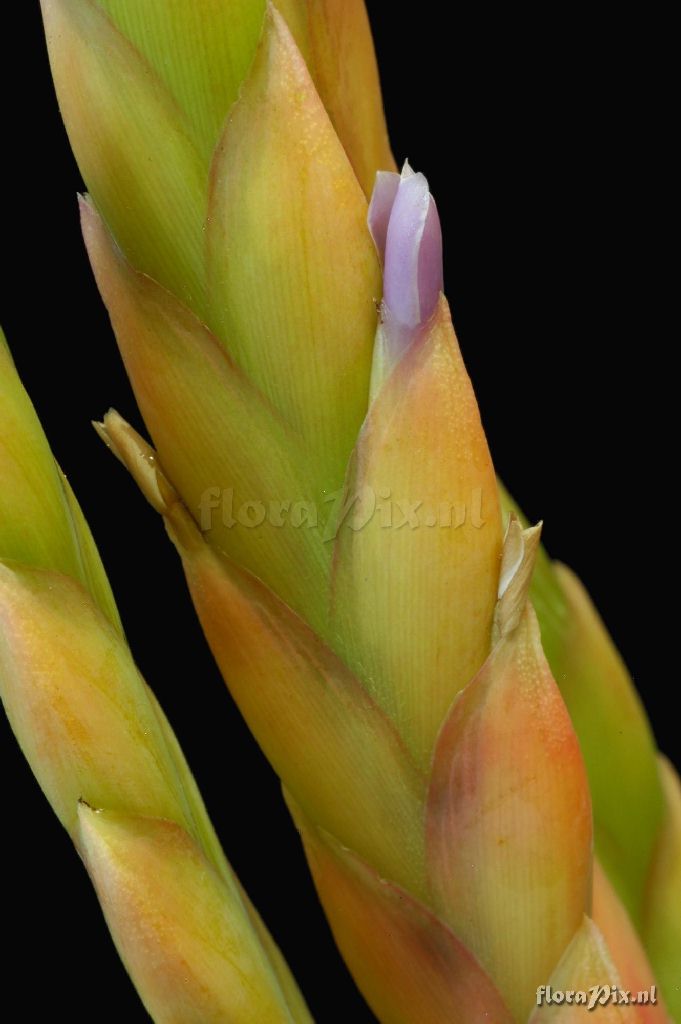
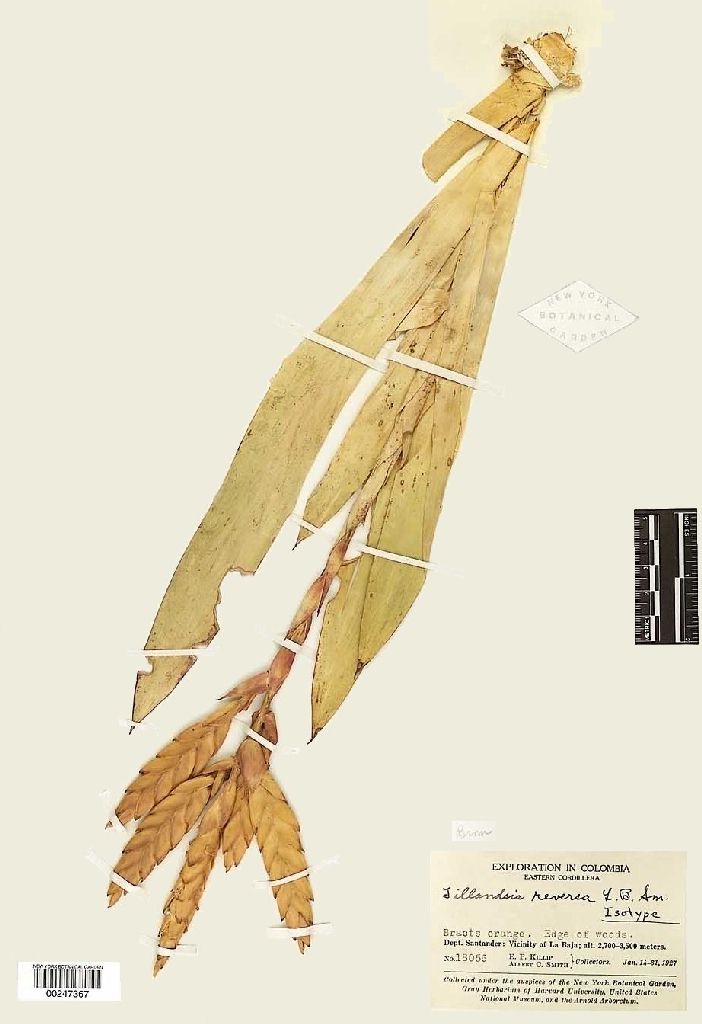
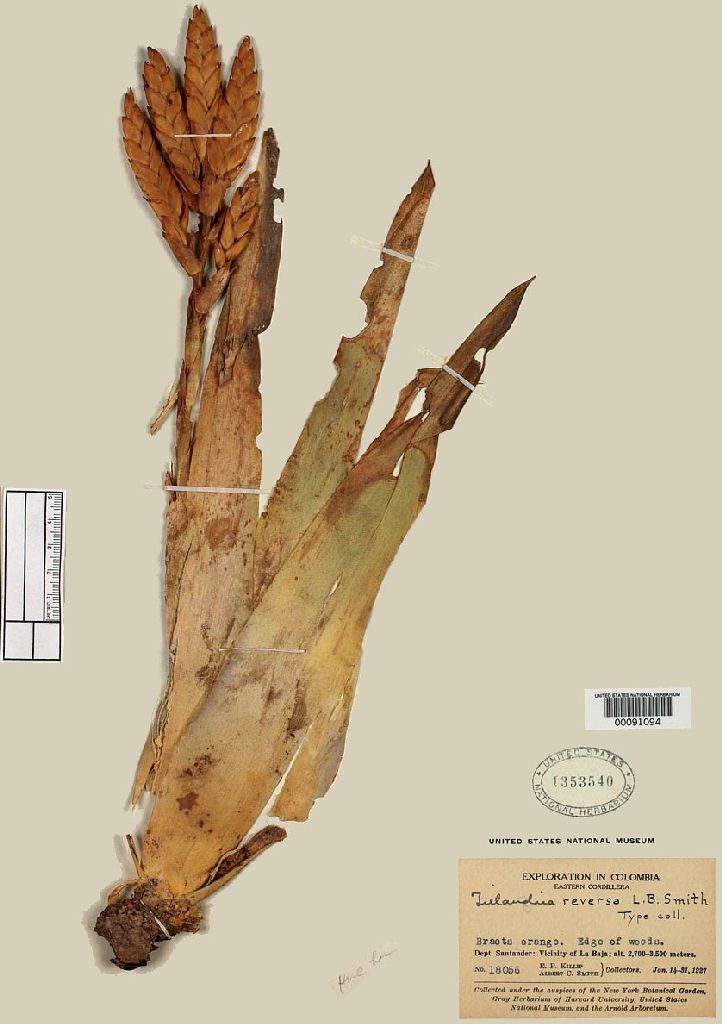
| Herbarium New York Botanical Gardens |
US National Herbarium |
Updated 03/09/18







